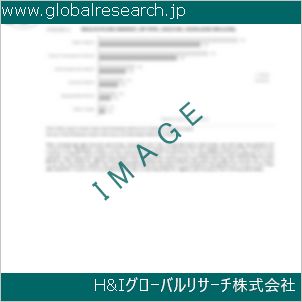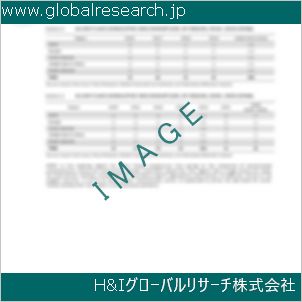Table of Contents
1 Industry Overview of Metal Cesium
1.1 Definition and Specifications of Metal Cesium
1.1.1 Definition of Metal Cesium
1.1.2 Specifications of Metal Cesium
1.2 Classification of Metal Cesium
1.3 Applications of Metal Cesium
1.3.1 Nuclear Application
1.3.2 Non-Nuclear Application
1.4 Industry Chain Structure of Metal Cesium
1.5 Industry Overview and Major Regions Status of Metal Cesium
1.5.1 Industry Overview of Metal Cesium
1.5.2 Global Major Regions Status of Metal Cesium
1.6 Industry Policy Analysis of Metal Cesium
1.7 Industry News Analysis of Metal Cesium
2 Manufacturing Cost Structure Analysis of Metal Cesium
2.1 Raw Material Suppliers and Price Analysis of Metal Cesium
2.2 Equipment Suppliers and Price Analysis of Metal Cesium
2.3 Labor Cost Analysis of Metal Cesium
2.4 Other Costs Analysis of Metal Cesium
2.5 Manufacturing Cost Structure Analysis of Metal Cesium
2.6 Manufacturing Process Analysis of Metal Cesium
3 Technical Data and Manufacturing Plants Analysis of Metal Cesium
3.1 Capacity and Commercial Production Date of Global Metal Cesium Major Manufacturers in 2023
3.2 Manufacturing Plants Distribution of Global Metal Cesium Major Manufacturers in 2023
3.3 R&D Status and Technology Source of Global Metal Cesium Major Manufacturers in 2023
3.4 Raw Materials Sources Analysis of Global Metal Cesium Major Manufacturers in 2023
4 Capacity, Production and Revenue Analysis of Metal Cesium by Regions, Types and Manufacturers
4.1 Global Capacity, Production and Revenue of Metal Cesium by Regions 2019-2024
4.2 Global and Major Regions Capacity, Production, Revenue and Growth Rate of Metal Cesium 2019-2024
4.3 Global Capacity, Production and Revenue of Metal Cesium by Types 2019-2024
4.4 Global Capacity, Production and Revenue of Metal Cesium by Manufacturers 2019-2024
5 Price, Cost, Gross and Gross Margin Analysis of Metal Cesium by Regions, Types and Manufacturers
5.1 Price, Cost, Gross and Gross Margin Analysis of Metal Cesium by Regions 2019-2024
5.2 Price, Cost, Gross and Gross Margin Analysis of Metal Cesium by Types 2019-2024
5.3 Price, Cost, Gross and Gross Margin Analysis of Metal Cesium by Manufacturers 2019-2024
6 Consumption Volume, Consumption Value and Sale Price Analysis of Metal Cesium by Regions, Types and Applications
6.1 Global Consumption Volume and Consumption Value of Metal Cesium by Regions 2019-2024
6.2 Global and Major Regions Consumption Volume, Consumption Value and Growth Rate of Metal Cesium 2019-2024
6.3 Global Consumption Volume and Consumption Value of Metal Cesium by Types 2019-2024
6.4 Global Consumption Volume and Consumption Value of Metal Cesium by Applications 2019-2024
6.5 Sale Price of Metal Cesium by Regions 2019-2024
6.6 Sale Price of Metal Cesium by Types 2019-2024
6.7 Sale Price of Metal Cesium by Applications 2019-2024
6.8 Market Share Analysis of Metal Cesium by Different Sale Price Levels
7 Supply, Import, Export and Consumption Analysis of Metal Cesium
7.1 Supply, Consumption and Gap of Metal Cesium 2019-2024
7.2 Global Capacity, Production, Price, Cost, Revenue, Supply, Import, Export and Consumption of Metal Cesium 2019-2024
7.3 USA Capacity, Production, Price, Cost, Revenue, Supply, Import, Export and Consumption of Metal Cesium 2019-2024
7.4 EU Capacity, Production, Price, Cost, Revenue, Supply, Import, Export and Consumption of Metal Cesium 2019-2024
7.5 China Capacity, Production, Price, Cost, Revenue, Supply, Import, Export and Consumption of Metal Cesium 2019-2024
7.6 Japan Capacity, Production, Price, Cost, Revenue, Supply, Import, Export and Consumption of Metal Cesium 2019-2024
8 Major Manufacturers Analysis of Metal Cesium
8.1 Manufacturer One
8.1.1 Company Profile
8.1.2 Product Picture and Specifications
8.1.2.1 Type I
8.1.2.2 Type II
8.1.2.3 Type III
8.1.3 Capacity, Production, Price, Cost, Gross and Revenue
8.1.4 Contact Information
8.2 Manufacturer Two
8.2.1 Company Profile
8.2.2 Product Picture and Specifications
8.2.2.1 Type I
8.2.2.2 Type II
8.2.2.3 Type III
8.2.3 Capacity, Production, Price, Cost, Gross and Revenue
8.2.4 Contact Information
8.3 Manufacturer Three
8.3.1 Company Profile
8.3.2 Product Picture and Specifications
8.3.2.1 Type I
8.3.2.2 Type II
8.3.2.3 Type III
8.3.3 Capacity, Production, Price, Cost, Gross and Revenue
8.3.4 Contact Information
8.4 Manufacturer Four
8.4.1 Company Profile
8.4.2 Product Picture and Specifications
8.4.2.1 Type I
8.4.2.2 Type II
8.4.2.3 Type III
8.4.3 Capacity, Production, Price, Cost, Gross and Revenue
8.4.4 Contact Information
8.5 Manufacturer Five
8.5.1 Company Profile
8.5.2 Product Picture and Specifications
8.5.2.1 Type I
8.5.2.2 Type II
8.5.2.3 Type III
8.5.3 Capacity, Production, Price, Cost, Gross and Revenue
8.5.4 Contact Information
…
9 Marketing Trader or Distributor Analysis of Metal Cesium
9.1 Marketing Channels Status of Metal Cesium
9.2 Traders or Distributors with Contact Information of Metal Cesium by Regions
9.3 Ex-work Price, Channel Price and End Buyer Price Analysis of Metal Cesium
9.4 Regional Import, Export and Trade Analysis of Metal Cesium
10 Industry Chain Analysis of Metal Cesium
10.1 Upstream Major Raw Materials Suppliers Analysis of Metal Cesium
10.1.1 Major Raw Materials Suppliers with Contact Information Analysis of Metal Cesium
10.1.2 Major Raw Materials Suppliers with Supply Volume Analysis of Metal Cesium by Regions
10.2 Upstream Major Equipment Suppliers Analysis of Metal Cesium
10.2.1 Major Equipment Suppliers with Contact Information Analysis of Metal Cesium
10.2.2 Major Equipment Suppliers with Product Pictures Analysis of Metal Cesium by Regions
10.3 Downstream Major Consumers Analysis of Metal Cesium
10.3.1 Major Consumers with Contact Information Analysis of Metal Cesium
10.3.2 Major Consumers with Consumption Volume Analysis of Metal Cesium by Regions
10.4 Supply Chain Relationship Analysis of Metal Cesium
11 Development Trend of Analysis of Metal Cesium
11.1 Capacity, Production and Revenue Forecast of Metal Cesium by Regions and Types
11.1.1 Global Capacity, Production and Revenue of Metal Cesium by Regions 2024-2029
11.1.2 Global and Major Regions Capacity, Production, Revenue and Growth Rate of Metal Cesium 2024-2029
11.1.3 Global Capacity, Production and Revenue of Metal Cesium by Types 2024-2029
11.2 Consumption Volume and Consumption Value Forecast of Metal Cesium by Regions, Types and Applications
11.2.1 Global Consumption Volume and Consumption Value of Metal Cesium by Regions 2024-2029
11.2.2 Global and Major Regions Consumption Volume, Consumption Value and Growth Rate of Metal Cesium 2024-2029
11.2.3 Global Consumption Volume and Consumption Value of Metal Cesium by Types 2024-2029
11.2.4 Global Consumption Volume and Consumption Value of Metal Cesium by Applications 2024-2029
11.3 Supply, Import, Export and Consumption Forecast of Metal Cesium
11.3.1 Supply, Consumption and Gap of Metal Cesium 2024-2029
11.3.2 Global Capacity, Production, Price, Cost, Revenue, Supply, Import, Export and Consumption of Metal Cesium 2024-2029
11.3.3 USA Capacity, Production, Price, Cost, Revenue, Supply, Import, Export and Consumption of Metal Cesium 2024-2029
11.3.4 EU Capacity, Production, Price, Cost, Revenue, Supply, Import, Export and Consumption of Metal Cesium 2024-2029
11.3.5 China Capacity, Production, Price, Cost, Revenue, Supply, Import, Export and Consumption of Metal Cesium 2024-2029
11.3.6 Japan Capacity, Production, Price, Cost, Revenue, Supply, Import, Export and Consumption of Metal Cesium 2024-2029
12 New Project Investment Feasibility Analysis of Metal Cesium
12.1 New Project SWOT Analysis of Metal Cesium
12.2 New Project Investment Feasibility Analysis of Metal Cesium
13 Conclusion of the Global Metal Cesium (CAS 7440-46-2) Industry 2024 Market Research Report
| ※参考情報 金属セシウムは、元素記号Csおよび原子番号55を持つ金属であり、周期表の第1グループに位置するアルカリ金属の一種です。その発見は1860年にドイツの化学者ローベルト・ブンゼルによって行われ、特有の青い光を発するため「セシウム」という名前が付けられました。金属セシウムは、非常に柔らかく、低い融点(約28.5℃)を持つため、常温でも固体でありながら、手で簡単に切ることができます。 金属セシウムの特徴の一つは、その化学的性質です。セシウムは非常に反応性が高く、特に水と反応しやすいのが特徴です。水と反応すると、水素ガスを発生しながら強い熱を放出し、場合によっては爆発的な反応を引き起こすことがあります。このため、金属セシウムは厳重に管理される必要があり、通常は石油や他の不活性な液体中で保存されます。 また、セシウムはその高い原子量と特異な同位体の存在により、特に原子時計での利用が注目されています。セシウム133(Cs-133)は、非常に安定した同位体であり、国際的な時間の基準として使用されています。セシウム原子時計は、非常に高い精度を持ち、1日あたり数十億分の1秒の精度を誇ります。この特性から、GPS技術や通信システム、衛星ナビゲーション技術において、セシウム時計が不可欠な存在となっています。 また、セシウムは産業用にも幅広く利用されています。例えば、化学合成において触媒として使用されることがあります。また、光学機器や真空技術などでも重要な役割を果たしています。特に、セシウムを使用した光検出器やイオン化検出器は、高感度で高性能な測定機器として、多くの科学研究や技術開発に活用されています。 さらに、セシウムは環境工学分野でも注目されています。放射性廃棄物の処理や、土壌の浄化プロセスにおいてもセシウムが使用されることがあります。特に、セシウムはその放射線の特性を利用して、放射性物質の検出や測定においても重要な役割を果たしています。これらの特性によって、セシウムはただの金属にとどまらず、高度な技術における不可欠な要素となっています。 セシウムの取り扱いには、非常に厳しい規制があります。特にその反応性が高いため、適切な保護具を用い、酸素や水分から遠ざけて保存することが重要です。また、セシウムは生物に対しても影響を及ぼす可能性があるため、取り扱いに際しては十分な注意が必要です。そのため、研究機関や産業現場においては、特に教育や訓練が重視されています。 セシウムの研究も進展しており、新しい用途の開発や性能の向上に向けた取り組みが行われています。たとえば、次世代の量子コンピュータや、より精密な時計、さらには新しいタイプのセンサ技術に関しても、セシウムの特性を活かした研究が進められています。量子技術分野では、セシウムの特性を利用することで、情報処理の効率や精度が向上し、従来の技術を凌駕する可能性があります。 このように金属セシウムは、その特異な特徴と応用の幅広さから、現代の科学技術において重要な役割を果たしており、今後もさらなる研究と技術革新に寄与することが期待されています。セシウムのさらなる応用の可能性を探ることは、科学の発展に貢献する重要なテーマとなっており、その未来の展望は非常に明るいと言えます。 |
❖ 免責事項 ❖
http://www.globalresearch.jp/disclaimer












